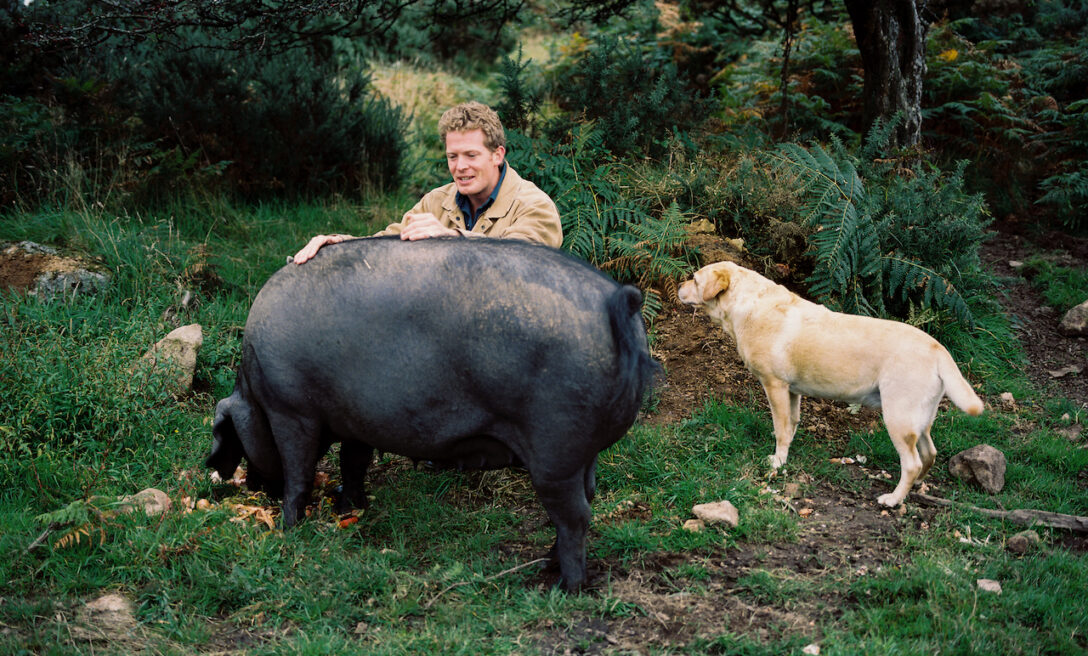
The most important activity when restoring a temperate rainforest is, unsurprisingly, planting trees. This has been the main focus at Cabilla’s Thousand Year Project over the last few months. The best time to plant trees is when the young saplings don’t have any leaves, between November and April. This is when the active roots have retracted and aren’t damaged by being removed from their root trainers and put out in the wild. This gives us a narrow period of the year when we can do this really important work and, inevitably, it’s when the weather on our windswept uplands can be at its most ‘romantic’.
We’ve been heroically supported by Plant One Cornwall and Wildanet; two local businesses who have spent countless hours burying shovels in our Cornish soil come rain, shine and even a bit of snow. They weren’t put off, no matter what the weather was doing each day, and have stoically adhered to our complicated planting plan. This plan has been designed to accelerate the establishment of a celtic rainforest habitat by factoring in the distribution of various tree species, the subterranean spread of the mycelial network that runs through the soil and the nurturing of epiphyte growth including the lichens, liverworts and mosses that will festoon the canopy.
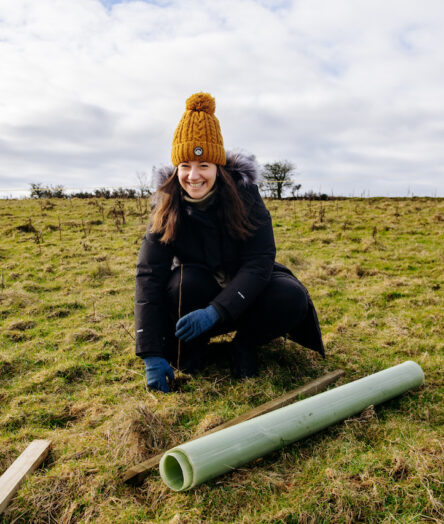
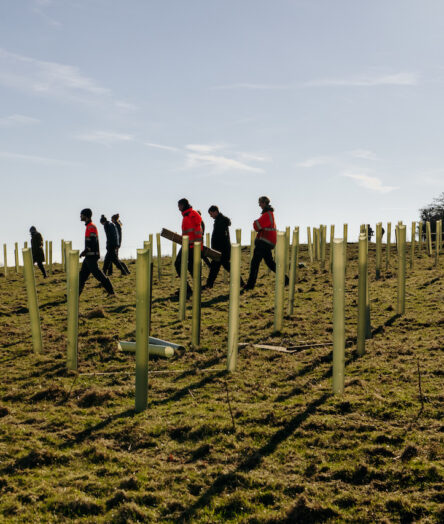
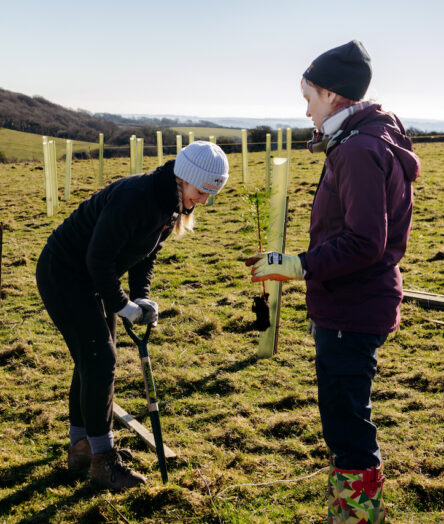
“We’ve so far planted a little over 3,000 young saplings in the ground which makes up less than 10% of our eventual target. Our plans are to re-establish 100,000 trees across the Cabilla valley but about half of these will be through natural regeneration.”
The paramount species in a British rainforest is the celtic oak and so 80% of the trees that we have put into the ground are of this species. We’ve so far planted a little over 3,000 young saplings in the ground which makes up less than 10% of our eventual target. Our plans are to re-establish 100,000 trees across the Cabilla valley but about half of these will be through natural regeneration.
Oak trees only produce acorns every 2-5 years. They do this so that their natural predators (rabbits, squirrels, deer, etc) have poor years where their numbers are naturally suppressed due to winter hunger. When they do grow and drop acorns this is called a ‘mast year’. Due to the dense mycelial web of connections in our rainforest our trees are all in perfect sync. This means that when they produce acorns they all do it at exactly the same time. Our abundant population of jays then gathers up between two to three thousand acorns per bird during each mast year and plants them out in the scarified areas that Gloria, our loyal Cornish black pig, has prepared for them. The jays do this so that they will have winter food secreted around their territory but they conveniently forget where they’ve planted up to 90% of the acorns. Natural rainforest regeneration then flourishes.
This wonderful collaboration between tree, bird and mammal facilitates and catalyses the expansion of the forest from the valley floor up to the pock marked, sheep devastated hill side, where it would once have grown. Our planting efforts will further help this natural process and make sure that a journey which would take 1,000 years with no human assistance can be achieved in as little as a few hundred.
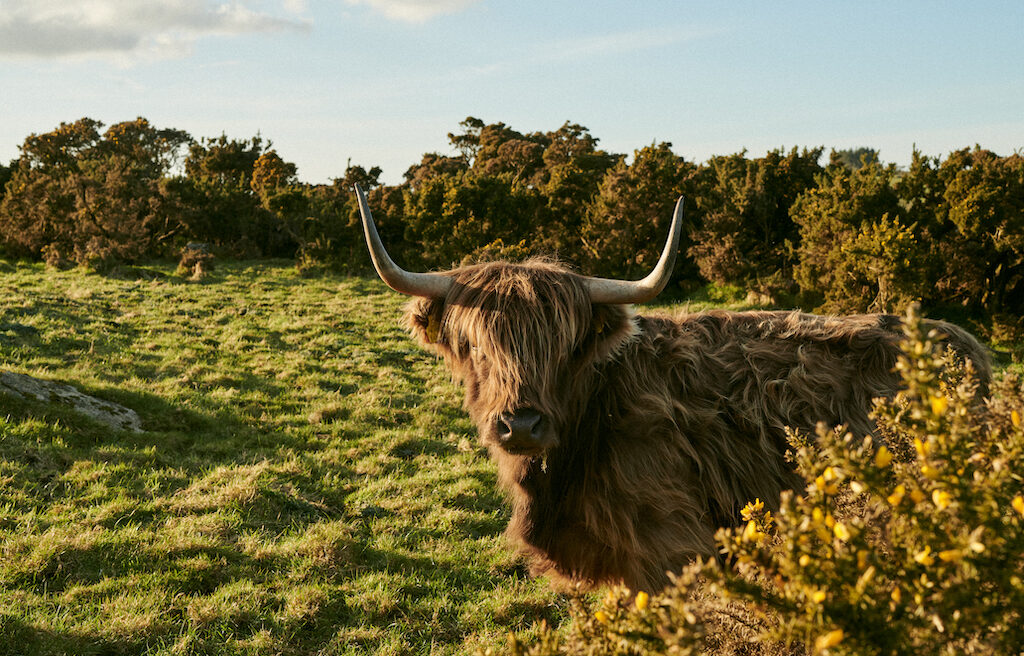
Alongside our winter planting we’ve started working with the most fabulous group of shaggy Highland cattle. These stunning beasts are the closest proxy we have in the UK to the ancient aurochs that would have roamed our forests scratching their horns against the bark of the old gnarled oaks and wallowing in woodland wet patches. We’ve been leant some NoFence collars by a terrific consultancy called Ecosulis. These collars will enable us to put our herd of Highlands through the planting system without needing miles of electric fencing. They look just like Swiss cow-bells but contain a solar panel, a GPS tracking system and a mobile electric control system that will allow us to release the cattle through a tight mob grazing circuit that will simulate the way a herd would have behaved a thousand years ago when they were ever on the watch for packs of wolves.
Our family of beaver are in fine fettle and their section of river has continued to morph into the most wonderful example of willow carr woodland. For every tree that they bring down a dozen new shoots are breaking through and creating the most terrific mosaic of messy, boggy, varied abundance. It really must be seen to be believed quite how incredible these ecosystem engineers are when let loose in their natural environment. I spied Sigourney the other day looking rather rotund and expectant as she waddled from her lodge to her favourite bathing spot so I’m hopeful that we might be welcoming some more baby beavers to the Cabilla valley before long. For anyone who hasn’t been to see them yet I heartily recommend a beaver spotting trip. You could even plant a tree or two while you’re here.
Images from the top down: 1 – European Nature Trust 2, 3, 4 – Plant One Cornwall 5 – Bex Aston